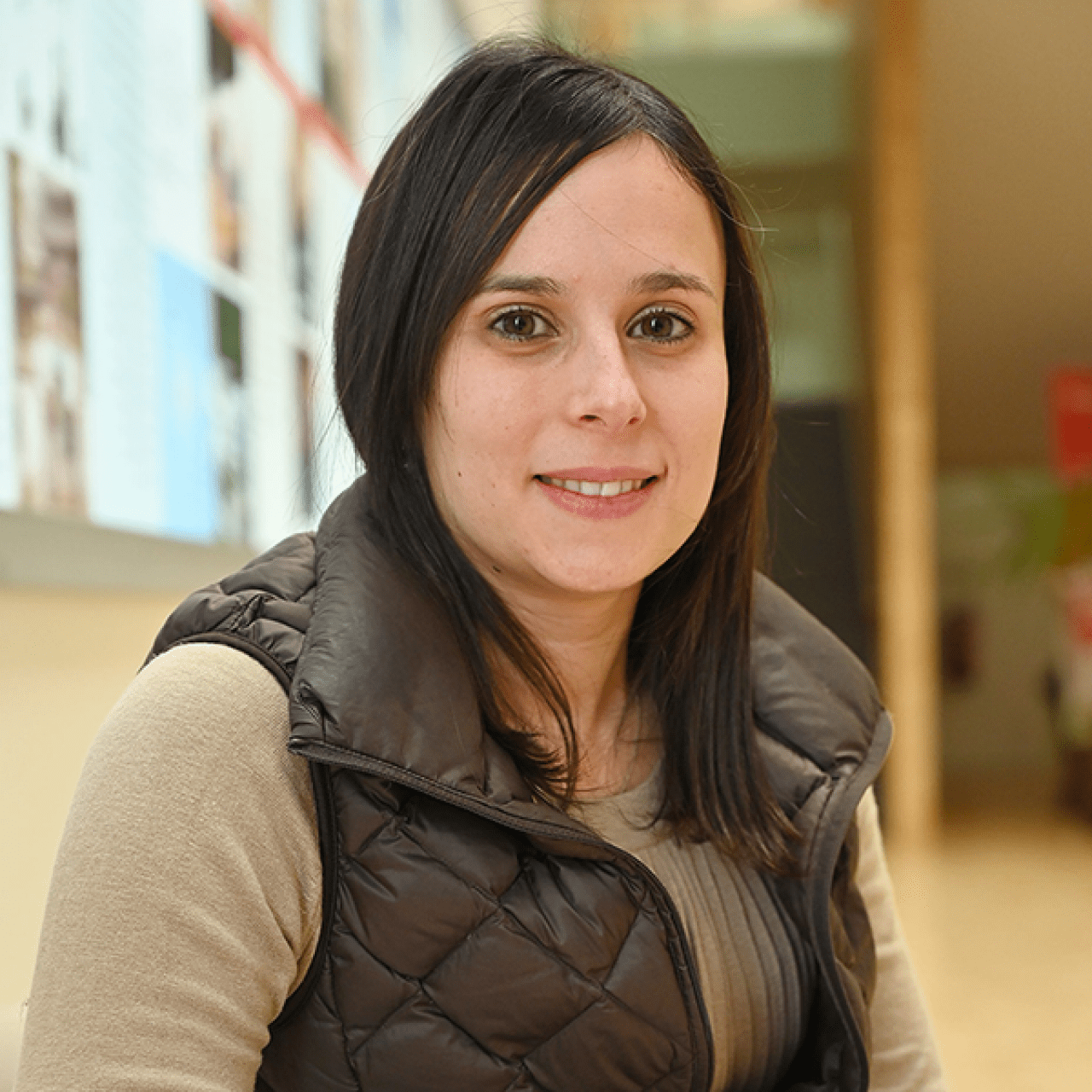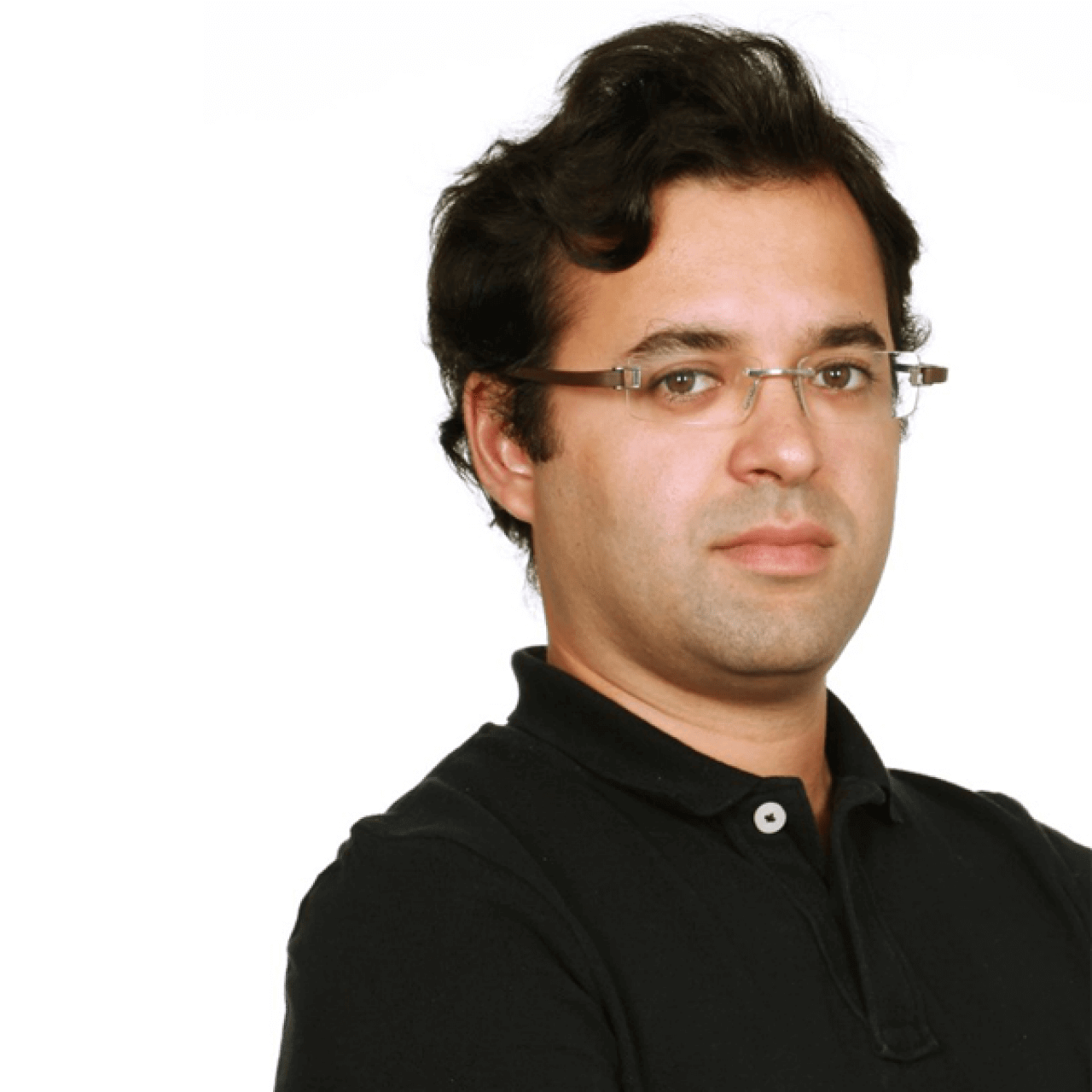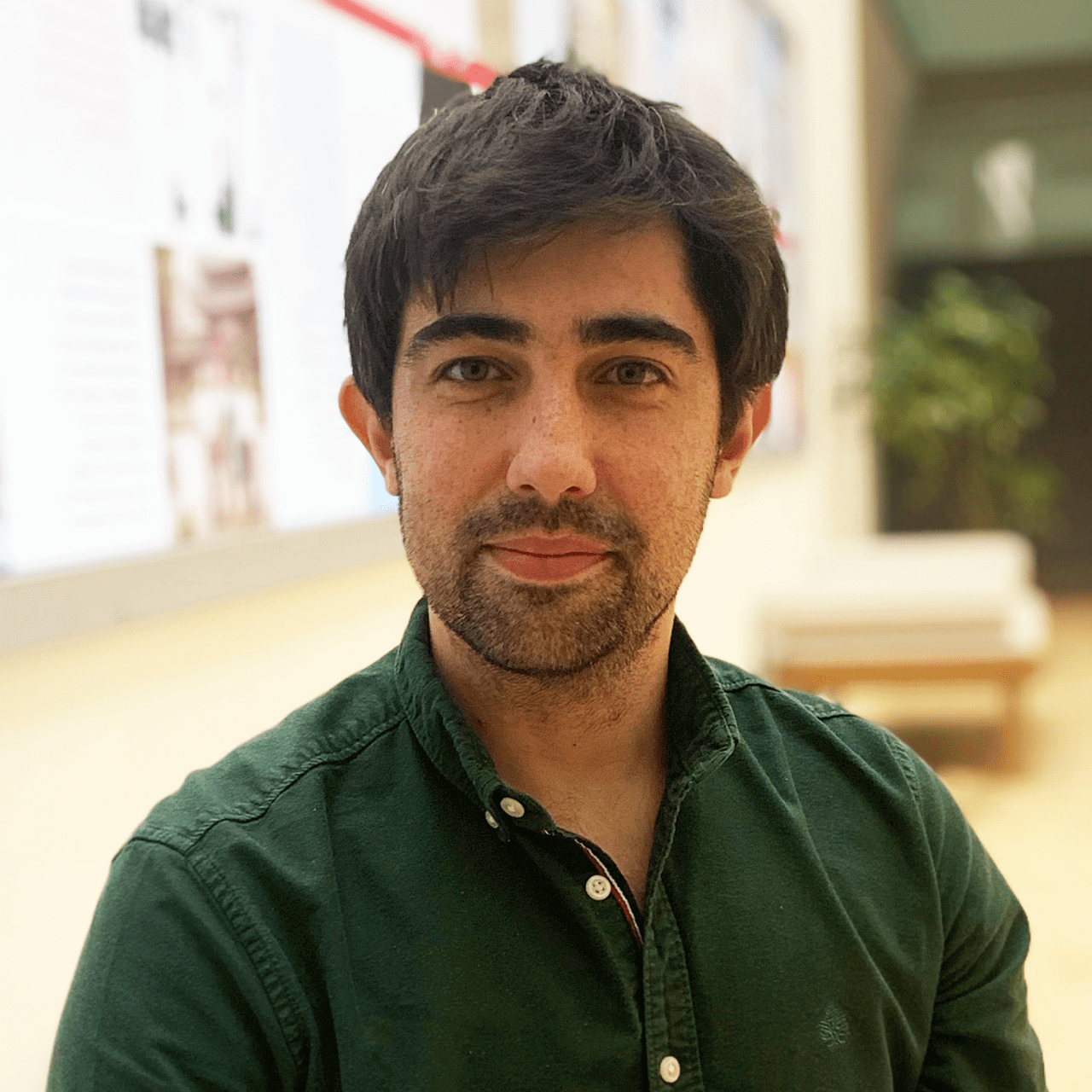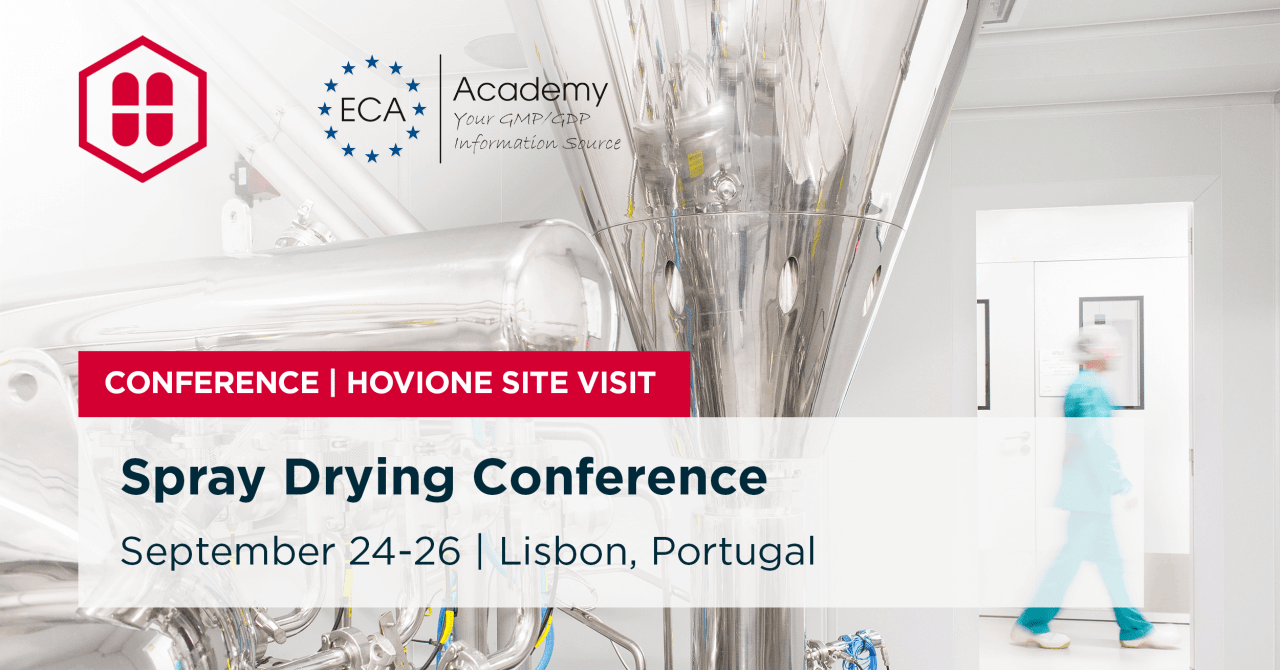Spray drying is presently one of the most exciting technologies for the pharmaceutical industry, being an ideal process where the end-product must comply with precise quality standards regarding particle size distribution, residual moisture/solvent content, bulk density and morphology.
At Hovione, we are proud to be part of this innovative field and are excited to join leading individuals from industry, academia and regulatory agencies at the ECA Conference on “Spray Drying - Solutions for the Pharmaceutical Industry”.
Register today
and take advantage of the unique opportunity to visit Hovione's cutting-edge labs and manufacturing facilities in Lisbon, Portugal
The objective of the conference is to offer a platform for exploring spray drying technology and processes. Attendees will see firsthand demonstrations of solutions for diverse requirements and benefit from a site visit to gain hands-on experience in Spray Drying.
Speakers
- Dr. Sune Klint Andersen, Janssen Pharmaceutica
- Dr. Jean-René Authelin, Sanofi
- Dr. Rainer Nicolai, F. Hoffmann La-Roche
- Simon Phillips, Nova Laboratories
- Dr. João Pires, Hovione
- Dr. Thomas Quinten, Janssen Pharmaceutica
- Dr. Inês Ramos, Hovione
- Dr. Harald Stahl, GEA
Join the conference's sessions led by our experts
"Amorphous solid dispersions by Spray drying from a formulation perspective"
Inês Ramos, Ph.D., R&D Manager, Formulation, Oral Drug Product Development
Description: The manufacturing of Amorphous solid dispersions (ASD) has become an established and commercially demonstrated strategy to improve the bioavailability of poorly water-soluble drugs. ASD formulation typically requires the definition of multiple factors that can amount to extensive lab experimentation, hindering fast-to-market. This lecture will provide an overview of how to design a Successful Formulation for Amorphous Solid Dispersions Produced by Spray Drying, using a streamlined approach and a proprietary technology to expedites the screening phase with minimal API requirements. An overview of Hovione’s methodology, the evaluation process, and the studies typically utilized, insights on alternative excipients, as well as key information needed to make a formal assessment of the best candidates will be provided resorting to case-studies.
"Scale-Up of a Spray Drying Process"
João Vicente, Ph.D., R&D Director, Corporate Technical Services
Description: A spray drying process will be subjected to multiple scale-up steps throughout the product’s life-cycle, thus requiring a robust process understanding to control the products properties. The scope of this talk is to describe the knowledge and risk based methodology that guides the stages from the process design up to qualification and commercial phase of a spray drying manufacturing process. The lecture will focus on predictive tools used to support process/product development and scale-up activities.
"Tailoring Spray Drying Processes for Biopharmaceutical and Respiratory Formulations"
João Pires, PhD., R&D Senior Manager, Process Development, Inhalation and Advanced Drug Delivery
Description: This presentation is dedicated to exploring the primary requirements and potential challenges inherent in applications of spray drying with highly particular specifications such as biopharmaceutical and respiratory formulations. The discussion will delve into the intricacies of accommodating these specifications and de-risking the process during its evolution from laboratory-scale up to commercial manufacturing. By focusing on these nuances, the aim is to provide insights into optimizing the spray drying process for various pharmaceutical contexts, with a keen emphasis on achieving overall product quality with the shortest risk and time-to-market.
Key learnings:
- Requirements & challenges when applying spray drying for biopharmaceutical and respiratory products
- Adaptation of specifications and de-risking of the process during its development from laboratory scale to commercial production
- Optimisation of the spray drying process for assuring product quality, minimize risk and assure shortest time to market

|

|

|
| Inês Ramos, Ph.D. Manager R&D Oral Drug Product - Formulation Group |
João Vicente, Ph.D. Director R&D Corporate Technical Services |
João Pires, Ph.D. Senior Manager R&D Process Development, Inhalation and Advanced Drug Delivery |
More about the Conference, Speakers and Programme
More about the Site Visit:
As part of the conference, registered participants will have a unique opportunity to visit Hovione's cutting-edge labs and manufacturing facilities in Lisbon, where research, development, and manufacturing activities take place.
In the labs you will gain access to Particle Engineering facilities, explore some of the most advanced analytical PAT tools, and get a close look at the specialized equipment used in spray drying development. You will also have the chance to observe analytical and process development operations, guided by Hovione experts.
During the visit to the manufacturing facilities, you will witness a state-of-the-art facility in action, showcasing a commercial spray drying unit.
Please note that availability for this exclusive site visit is limited, so securing your spot early is highly recommended to ensure you don't miss out on this opportunity to experience Pharmaceutical innovation at Hovione.
- We provide bus transfer from the conference hotel to the Hovione sites. After the site visit there will be transfers to the airport and back to the conference hotel
- Due to competition reasons, individual participants may be excluded from the site visit
- Participants are required to sign a Confidential Disclosure Agreement (CDA) before entering Hovione sites
More about the ECA Academy:
The ECA Academy is the educational organisation established by the ECA Foundation. It develops and organises a wealth of international education courses, conferences (also as part of a GMP Certification Programme) and webinars around GMP and regulatory compliance, picking up emerging GMP challenges and currently discussed subjects. While courses and webinars are designed to provide continuous education for GMP professionals in production, quality control, quality assurance etc, European conferences are organised as discussion forums on new trends and developments.
If you have any questions about the Conference:
Tel.: +49 (0)6221 / 84 44 0
www.gmp-compliance.org
The Leader in Spray Drying
With the largest number of commercial projects, the best science and engineering, the largest capacity, and the most experienced team, Hovione can take your project from development to market like no one else.
Learn more on how to overcome your solubility issues with the best scale-up science.



